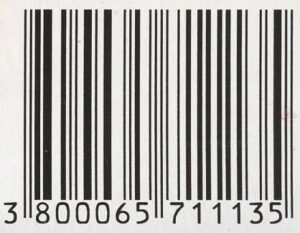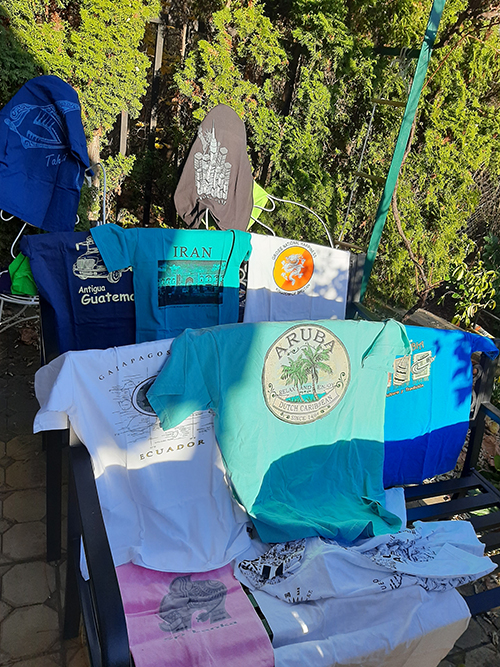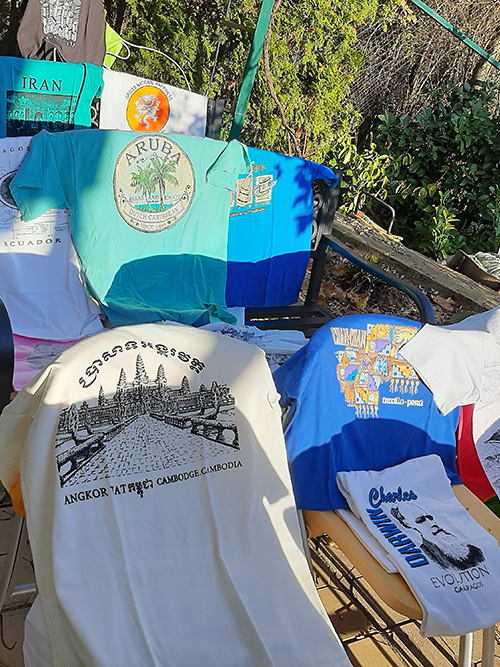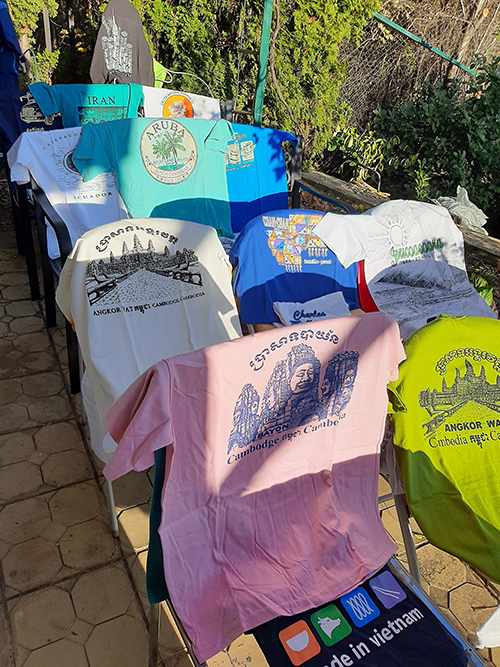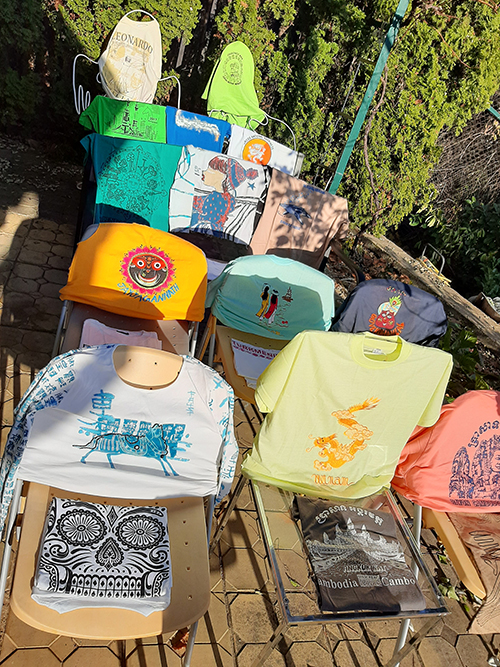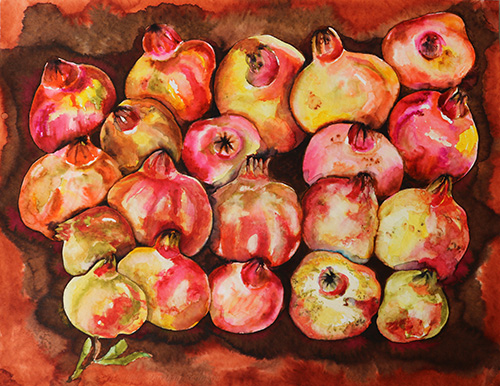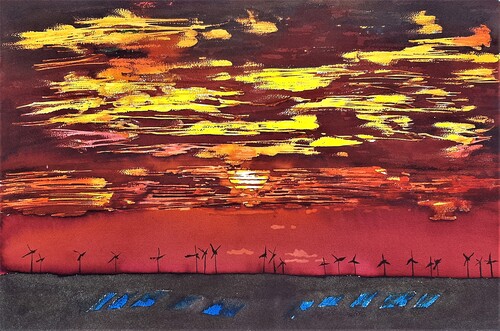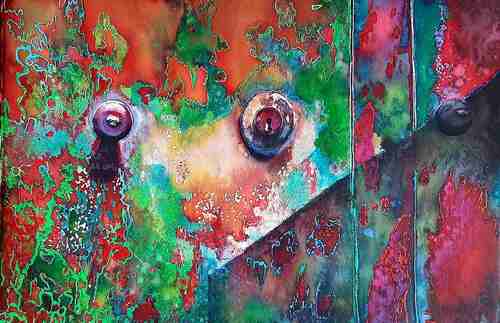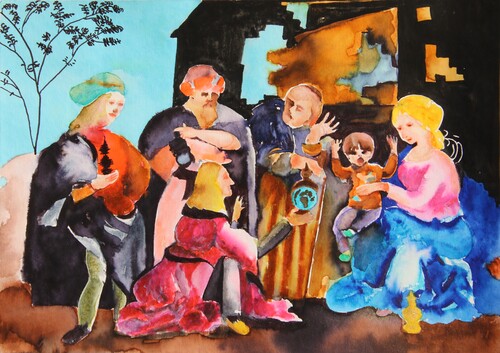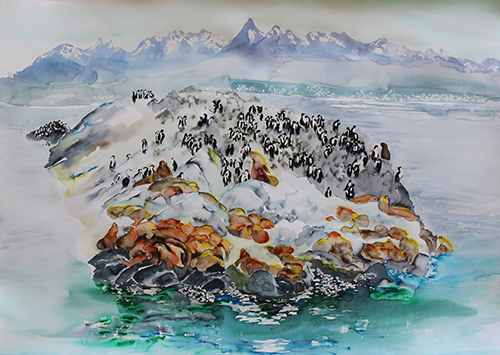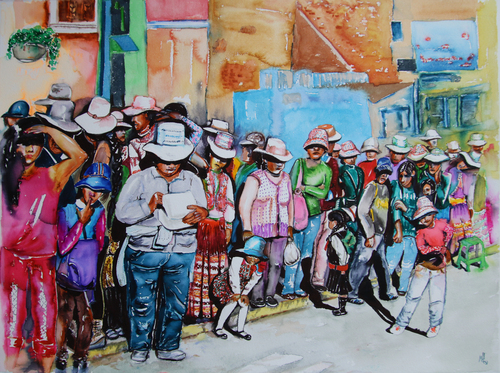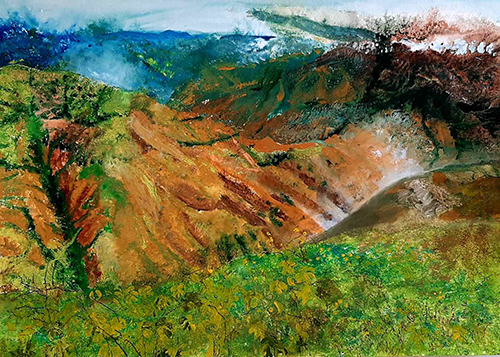Barcode, can also be found as bar code, bar-code, bar marking is a system for coding commodity units or objects in industry, trade, medicine and many other fields, which provides information about the manufacturer and the item in trade or other data. The barcode serves to identify an object and helps to track the turnover and demand for goods, as well as monitors the serviceability of companies as taxpayers.
Now let’s take the meaning and content of the definition and transfer it as in the march of the mad, you know this technique, to the T-shirt (it is correct to write the flannel, not the pronounced flannel, because it comes from the English Flannel, which means soft fabric with different finesse, but despite the island origin of the word more Bulgarian to me than a T-shirt) – a real barcode of the tourist product unit – the tourist site – museum, castle, palace, fortress, city, state, ethnicity, culture, provides complete information about the visual and the ethnic culture of the producer and inventor, as well as other visual data, where interesting-tempting, where boring-intrusive. It fully serves for total identification of the above set of tour sites and as a guide helps to track the market orientation to / from the tourist, so we can reverse the direction of the touches, comply with tourist demand and monitor the passenger traffic, including the tax flow, which can be slightly diverted.
On the T-shirt-Barcode there is/ is also a machine, understand alphanumeric marking and is a kind of packaging of the commodity unit, in our case the tourist site.
The most common are barcodes, consisting of numbers and different in width vertical parallel lines, in our case the pile of T-shirts are horizontally complex, visually resembling a lattice, although of colors, whence the English word bar – rod, rod. Barcodes are read by optical scanning devices called barcode readers-tourist eyes, equipped with the appropriate software, cleverly hidden in the skull.
There are also more modern barcodes in the form of concentric circles (it is difficult for me to imagine them) or point matrices with a square shape (these become), called matrix, 2D barcodes (rather 3D) or QR codes (in English). : Quick Response – “quick response” is not alien to the tourist), which are made so that they can be easily scanned by any device, especially with the speeding smartphones and tablets. Often the tourist does just that – scans with an available phone without buying. The square 2D barcodes were invented in 1994, a little later than my tourist start, by one of the subsidiaries of the Japanese car manufacturer Toyota (we hid the name in Latin because of the anti-advertising). They consist of black modules on a white background, arranged in a square pattern, quite popular in Japan and other countries in the Far East. We have also been looking for conventional code T-shirts in these lands, which you can find in the pot.
However, the first barcodes were created in the United States and patented in 1949. The barcode was first used to scan the cash register of a packet of chewing gum in 1974 in a supermarket in the state of Ohio, USA, unfortunately it is not the cherished T-shirt, we will chew it. The American barcode system is known as the “Universal Product Code” (UPC), as is the T-shirt for us. To coordinate efforts to implement and standardize barcodes / T-shirts in the United States, the Uniform Code Council (UCC, Uniform Code Council) was created, later renamed GS1 US, and we just whistle – ffffffflanel.
In 1977, a similar barcode system was introduced in Europe, and at the initiative of nascent tourist traders and still non-oriented tour producers, the non-governmental association “European Article Numbering (EAN)” was established, they reminded us – our numbering is by country of origin. In 1991, UCC and EAN signed a fictitious oral agreement for full international and technical compatibility between the two coding systems, even between all systems – we are talking about the same model. This creates GS1, a global flannel organization whose mission is to create and implement purchasing standards and the right solutions for working tourists and transparent quality supply chains globally and between all tourism sectors without exception. GS1’s headquarters are in Brussels and Princeton, New Jersey, ours are much more. By 2013, the organization has a presence in over 100 countries, here I am beaten with about fifteen, and over a million members – I do not need so much. In fact, I don’t need the ones you see.
Bulgaria has been a member of the thing since the end of 1991, I was looking for that date, this is my real tourist start. Under the conditions for informal voluntary membership in the International Flannel Fan Association, the countries are represented by tour guides and non-governmental, non-profit associations, not representing the interests of non-producers and non-traders. The official representative of Bulgaria in the matter is the top-t-shirt Chamber of Commerce and Industry (TFTPP). The activities for introduction, rise and control of the application of the flannel standards are arbitrary, selectively and tastefully selected – already with the status of representativeness. We don’t even care about the manufacturers, as long as they are good and suitable for consumers. Barcode standards are difficult to understand and we will not deal with them. It is enough for you to look at this world diversity to become addicted to such a collection with a different structure and should be considered separately.
T-shirt barcode applications are diverse, even multifunctional – from pajamas to formal events. T-shirt bar management can provide very detailed and timely information on key aspects of the business, helping and speeding up any decision-making. Quick-selling items can be identified in a flash and new warehouse orders can be made automatically. Slow-selling ones are also instantly identified and orders for their deliveries are planned so that they do not take up unnecessary space in the retail space and suitcases, including the adjacent wardrobe and storage space, could be dressed several at a time, which I find better. recovery. Even with so many numbers, they can’t afford it. With barcodes, it is difficult to collect data on seasonal cyclicity and their life cycle, given the bondage of winter summer, spring summer, summer summer and autumn summer.
If even now I have not convinced you of the universality, inevitability and irresistibility of buying a T-shirt in a tourist section, then you are too classic type.
Cheers!
М.К.
10.2020
The project was presented at the San Stefano Plaza – Betona Gallery in Sofia in November 2020
